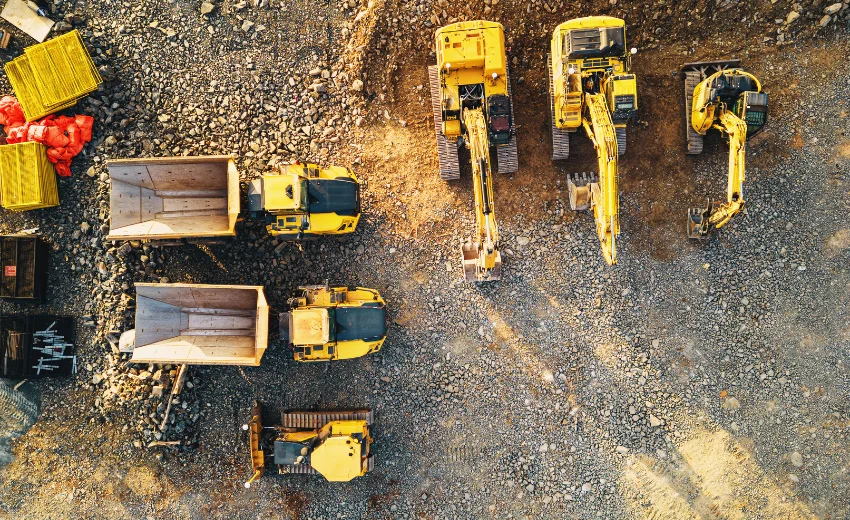The construction equipment rental industry has seen significant growth in recent years, driven by the rising demand for cost-effective solutions in construction projects. Renting equipment eliminates the financial burden of purchasing and maintaining machinery, making it a popular choice for contractors and builders. However, as the market grows, so does the competition.
Optimizing your construction equipment rental business is crucial to staying ahead and maximizing profits. This article explores practical strategies to streamline operations, improve customer satisfaction, and increase profitability.
Understand Your Market and Customer Needs
The foundation of any successful business is a thorough understanding of its target market. This means knowing what your clients need and aligning your services accordingly in the construction equipment rental sector.
Steps to Identify Market Trends and Needs:
- Conduct Market Research: Analyze industry trends, local construction activities, and competitors to identify in-demand equipment.
- Engage with Customers: Regularly communicate with clients to understand their pain points and preferences.
- Monitor Seasonal Demands: Certain equipment may be more prevalent during specific seasons or project phases, such as excavators during foundation work or scaffolding during structural construction.
By staying attuned to market demands, you can ensure your inventory aligns with customer needs, minimize idle equipment, and boost rental income.
Maintain and Upgrade Your Equipment Fleet
Reliability is a key factor determining customer satisfaction in the rental business. Well-maintained equipment ensures safety and efficiency and reduces downtime and repair costs.
Best Practices for Fleet Maintenance:
- Implement Preventive Maintenance: Regularly inspect and service your equipment to catch and address issues before they escalate.
- Keep a Maintenance Schedule: Use digital tools or software to track maintenance schedules and ensure timely servicing.
- Invest in Upgrades: As technology evolves, newer models of construction equipment offer better performance, energy efficiency, and safety features. Gradually upgrade your fleet to meet modern standards.
Customers are more likely to return to a rental company that offers reliable, up-to-date equipment, so prioritize maintenance and upgrades as part of your optimization strategy.
Embrace Technology for Business Efficiency
Incorporating technology into your operations can streamline processes and improve overall efficiency. From inventory management to customer interaction, digital tools can transform how you run your rental business.
Key Technologies to Consider:
- Equipment Tracking Systems: GPS-enabled tracking systems can monitor the location and usage of your rental equipment, preventing misuse and theft.
- Rental Management Software: These platforms help manage bookings, track inventory, and generate invoices, saving time and reducing manual errors.
- Online Booking and Payment: Offering a user-friendly online platform for reservations and payments can enhance customer convenience and expand your reach.
Adopting these technologies optimizes your business operations and demonstrates professionalism and innovation to your clients.
Focus on Marketing and Customer Experience
Effective marketing and exceptional customer service are essential for building a loyal client base. A satisfied customer is likelier to return and recommend your services to others.
Marketing Strategies to Boost Visibility:
- Leverage Social Media: Platforms like LinkedIn, Facebook, and Instagram can showcase your equipment, highlight customer testimonials, and announce promotions.
- Local SEO Optimization: Ensure your business appears in local search results by optimizing your website with relevant keywords and creating a Google My Business profile.
- Email Campaigns: Keep clients informed about new equipment, discounts, and company updates through regular email newsletters.
Enhancing Customer Experience:
- Provide Clear Information: Offer detailed descriptions, specifications, and rental terms for each piece of equipment.
- Offer Training and Support: Provide basic operational training for complex machinery and ensure customers can reach you for support if needed.
- Ensure Transparency: Maintain transparent, upfront pricing to build trust and avoid disputes.
Satisfied customers are the backbone of any successful rental business, so prioritize their experience at every touchpoint.
Optimize Pricing Strategies
Your pricing model can significantly impact your revenue and competitiveness. It’s essential to balance affordability for your clients and profitability for your business.
Tips for Setting Competitive Prices:
- Analyze Competitor Rates: Research local competitors to understand market pricing trends.
- Offer Flexible Pricing: Provide options for daily, weekly, or monthly rentals to cater to different project durations.
- Incentivize Long-Term Rentals: Offer discounts for extended rental periods to encourage longer commitments.
In addition, consider implementing a dynamic pricing model that adjusts rates based on demand, availability, and seasonal factors to maximize revenue.
Build Strong Partnerships and Collaborations
Collaborating with construction companies, contractors, and suppliers can open new avenues for business growth. Establishing partnerships helps create a reliable network that benefits all parties involved.
Ways to Foster Partnerships:
- Exclusive Deals: Offer special rates or priority service to repeat customers or partners.
- Joint Marketing Efforts: Collaborate with construction firms to co-promote your services.
- Supplier Relationships: Build strong ties with equipment manufacturers to access discounts and support for repairs and upgrades.
A robust network increases your visibility and builds trust within the industry, positioning your business as the go-to rental provider.
Monitor Performance and Adapt Strategies
Continuous improvement is critical to staying competitive in the construction equipment rental business. Regularly assess your performance and adapt strategies based on data-driven insights.
Metrics to Track:
- Utilization Rates: Measure how often each piece of equipment is rented out to identify underperforming assets.
- Customer Feedback: Collect reviews and ratings to gauge customer satisfaction and identify areas for improvement.
- Revenue Trends: Analyze income patterns to spot opportunities for growth or cost reduction.
You can respond proactively to market changes and customer needs by consistently evaluating your performance and staying flexible.
Conclusion
Optimizing your construction equipment rental business requires strategic planning, technological adoption, and a customer-centric approach. Understanding your market, maintaining a reliable fleet, leveraging technology, and prioritizing customer satisfaction are essential to success.
As competition in the industry continues to grow, businesses that embrace innovation and adaptability will thrive. By implementing these strategies, you can enhance efficiency and profitability and establish a reputation as a trusted and reliable partner in the construction sector.
Whether you’re a seasoned player or a newcomer, the journey to optimizing your rental business is ongoing. Stay proactive, listen to your customers, and embrace change to ensure sustained growth in this dynamic industry.

